Cidre With The Soul of Wine: Six French Artisanal Producers, in Normandy and Brittany, Make Intense, Complex, Effervescent and Tranquil Blends and Varietals From Native Apples (A Dozen-Bottle Sampler $199) + Cidre & Food Experience July 16 – RSVP
The grapes used to make wine are often unpleasantly sweet to eat; the apples used to make cidre apples are generally too tart and tannic to eat. The differences may snowball from there, yet the two beverages stroll down the same path toward an identical goal: An adult, fruit-based beverage whose ultimate success is based on the quality of the raw product and the skill of the creator.
In France, ‘cidre’ is the trademarked term for fermented cider from Normandy and Brittany; it is generally effervescent and contains about 3–5 percent alcohol. Sweetness varies; although it is mainly produced dry (Brut), the sweeter style (Doux) has its fans. Due to longer, more complete fermentation, Brut cidre is generally on the higher end of the ABV scale.
Dad joke: “Do the French have a 4th of July? Yes they do; right in between the 3rd and the 5th.”
Low in octane, effervescent, quaffable and refreshing, cidre offers a great alternative to beer for your outdoor summer tipple. Not only that, but because the original colonies were an apple country, too damp for barley, chances are good that the signing of the Declaration of Independence was accompanied by far more cider toasts than beer.
The ten cidres offered in this week’s 4th of July package are from six top-shelf producers. All 750 ml with one noted exception.
Cidre is Cidre
Throughout the world, ‘cider’ (as opposed to cidre) has no standard definition. In the UK, for example, just 35% juice content is required – even less in other countries – all of which can be from concentrate from virtually anywhere. Essentially, the focus of mass market ciders is homogeneity and manufactured consistency and the profit that comes from volume production.
In Normandy and Brittany, the ideology is much different. Using bittersweet and bittersharp apples rich in pectins and tannins and low in acid, cidre tends to be a farmhouse undertaking and the art of production involves a filtering process known as keeving; keeving allows the natural pectin of the apples turn to a jelly-like consistency in cold temperatures over a week, where it rises to the top of the fermentation vessel as the heavy solids filter to the bottom of the tank and the jelly at the top. The remaining juice in the middle of the tank is then slowly fermented at cold temperatures with small quantities of yeast for 3-6 months. The carbonation may be the result of a Champagne-like process or the artificial introduction of carbon dioxide at bottling.
Cidre ‘Terroir’: A Sense of Place
When fifteenth century Cistercian monks in Burgundy first began to document the difference in wine quality from various vineyards, they believed that it was a sign from above; that terroir expressed the variegated contours of God’s creation. Although in the modern era, the science of fermentation and a winemaker’s skill in applying and refined production methods have supplanted a monastic explanation for the differences in wine, the quest for a ‘sense of place’ remains alive and well.
In cider production—especially when compared to wine—terroir has traditionally had a less firm hold on the thought processes. For most of the world, cider is a year-long industrial manufacturing process, while in France, especially in controlled appellations, cidre is typically made seasonally, following the apple harvest. But like wine from grapes, cidre can be redolent not only of the fruit used, but of the locality where it’s grown; the soil, the aspect, the geography and the climate of the orchards.
This is precisely what winemakers call terroir.
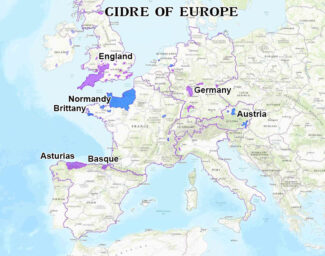
L’AOP (appellation d’origine portégée) ensures that the product comes from a specified geographical area and is fermented accordingly to a specific savoir-faire. For cidre, there currently four AOPs: Cornouaille, Cotentin, Pays d’Auge. Du Perche, a region in lower Normandy about ninety minutes from Paris, achieved its own AOP status in October 2020, and impressively, it is also the first fully organic cidre appellation in France.
Normandy
Normandy, which most of us associate with the D-Day invasion of 1944, gets a failing grade in being French: They tend to love Americans. They also love apples, and harvest nearly half a million a year, many (but not all) destined to be transformed into Norman Cidre. Throughout the regions of Calvados, Eure, Manche, Orne and Seine-Maritime, cidre is king, although the menu also includes world-class apple juice, pectin jelly and phenomenal apple-based pastries. In the 9th century, Charlemagne ordered more apple trees to be planted in the region, which is too far north and too sunshine-challenged for grape cultivation.
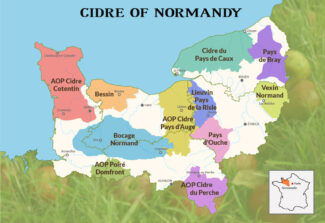
The Norman apple harvest begins in mid-September, when ripe fruit begins to fall from trees naturally. More than 200 varieties of apples are legally permitted; the most common is the Frequin Rouge, followed by distinctive Michelin and Muscadet de Dieppe.
Marie-Agnès Hérout
Maison Hérout
The Contenin Peninsula, part of the staging area for Operation Overlord (the codename of the Invasion of Normandy) pokes its nose far into the English Channel, and was chosen as a landing site for this very reason. Maison Hérout, known for producing some of the driest and most complex ciderss made anywhere, has seen many such incursions—the Hérout family tree goes back to the Vikings, who settled in this area around the ninth and tenth centuries. In fact, many Cotentin village names still flaunt Norse roots, like the beautiful Briquebec and Quettetot.
The Hérout estate is located near the town of Auvers, where apples thrive in a lush oceanic climate. The Hérout family began producing cidre in the 1940s; today, Marie-Agnès Hérout has taken over the farm and remains true to her heritage by producing some of the finest cidres available from this region. After picking, the apples are grated, macerated, and then pressed with the help of a rack press dating back to 1920, whereupon the juice is left to ferment for four to seven months, often in used Calvados barrels.
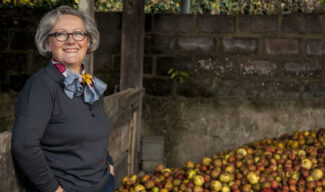
Marie-Agnès Hérout, Maison Hérout
© Hérout Cidres & Calvados
Marie-Agnès also continues the family tradition of planting apple trees for future generations and in 2000, began a campaign with the Syndicat de Promotion du Cidre du Cotentin to earn the region’s certification for Appellation d’Origine Contrôlée Cotentin status. In May of 2016, after 16 years of hard work and perseverance, the quest succeeded.
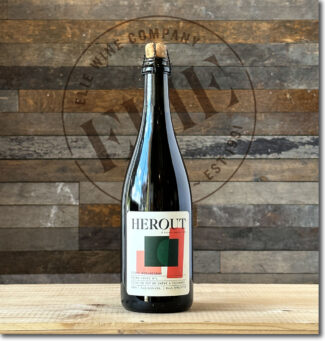 Maison Hérout ‘Micro – Cuvée No 1’, 2019 AOP Cotentin ($23) – (Effervescent Brut – Cidre Bio 6.5% abv)
Maison Hérout ‘Micro – Cuvée No 1’, 2019 AOP Cotentin ($23) – (Effervescent Brut – Cidre Bio 6.5% abv)
A fizzy, bright gold organic cidre aged for three months in Calvados barrels (leading to the slightly higher alcohol content). It shows aromas of fallen lemon and earth with a lightly tannic, vibrant and compelling body that shows brisk dried peach, hay and parchment on the finish.
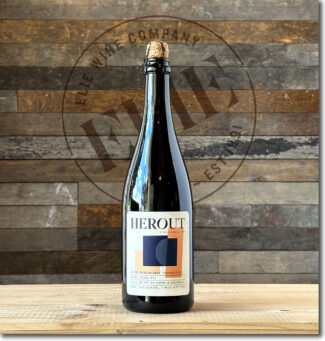 Maison Hérout ‘Micro – Cuvée No 1’, 2020 AOP Cotentin ($23) – (Tranquil – Cidre Bio 5.5% abv)
Maison Hérout ‘Micro – Cuvée No 1’, 2020 AOP Cotentin ($23) – (Tranquil – Cidre Bio 5.5% abv)
A still version of the above, made as an experiment that proved to be a widely popular success.
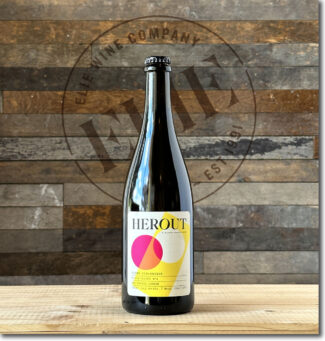 Maison Hérout ‘Micro – Cuvée No 4’, 2020 AOP Cotentin ($23) – (Effervescent – Cidre Bio 4% abv)
Maison Hérout ‘Micro – Cuvée No 4’, 2020 AOP Cotentin ($23) – (Effervescent – Cidre Bio 4% abv)
No. 4 a new cuvée produced entirely from rare acidic apples grown in the Contentinois orchards with no addition of bitter or sweet apples. It is barrel-aged for several months before the ‘prise de mousse’ captures the sparkle. Notes of rich apple must, orange, honey, leather, and earth lead to a tannic, slightly bitter finish.
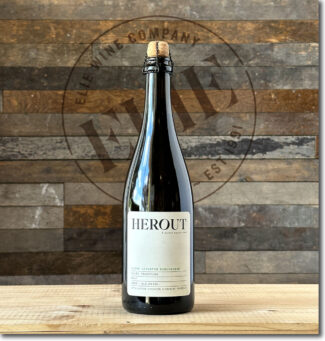 Maison Hérout ‘Cuvée Tradition’, 2020 AOP Cotentin ($18) – (Effervescent – Cidre Bio 5% abv)
Maison Hérout ‘Cuvée Tradition’, 2020 AOP Cotentin ($18) – (Effervescent – Cidre Bio 5% abv)
Nicely balanced between sweetness and acidity, the cidre is orange-yellow and delicately effervescent. It shows subtle aromas of butter and dried herbs behind the crisp apple.
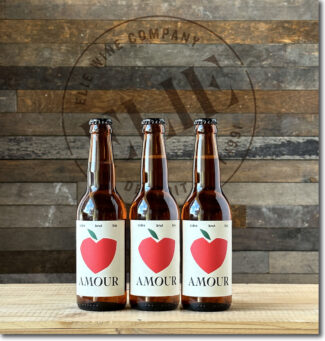 Maison Hérout ‘Amour’, IGP Cidre de Normandie ($8) – (Effervescent Brut – Cidre Bio 4.5% abv) – 3 bottles (330 ml)
Maison Hérout ‘Amour’, IGP Cidre de Normandie ($8) – (Effervescent Brut – Cidre Bio 4.5% abv) – 3 bottles (330 ml)
This is the only non-AOP cidre made by Hérout; it includes fruit that originates just outside the appellation and is exclusively bottled in 330 ml bottles. The juice is aged in a tank and bottled after about four months. Organic and slightly off-dry with the second fermentation occurring in the bottle; the cidre has an appealing low alcohol content. It is redolent of ripe apples in pastry, with hints of orange citrus, forest floor, bitter coffee bean and apricot on the finish.
Cyril Zangs
Cyril Zangs
Jazz-aficionado Cyril Zangs was a book sales rep in Paris before returning to his native Normandy and jumping into the cidre game with both feet. Of the 200 apple varieties approved for cidre making, he uses 69 of them, and in keeping with the natural wine movement, he ferments on native yeasts, unfiltered and without added sulfur.
After apple quality, Zangs says, it is all about process: “Each of our varieties possesses a particular characteristic (sweet, bittersweet, bitter, slightly acidic or sour) and are harvested from high-stem orchards which range from fifteen to sixty years old. We harvest by hand between early October and mid-December, when apples are the ripest. Our manual selection process ensures that only the best apples are picked—we then separate the apples by variety and store them in our barns to continue ripening for up to six weeks.”
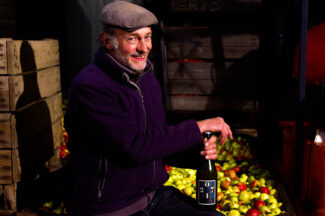
Cyril Zangs
What happens next? In his own words: “Once sorted to obtain the best flavor balance, the apples are grated to create a marc. This is put through to our hydraulic press and the juice is transferred to vats, and racked during the 6 months long fermentation process. It is left undisturbed apart from infrequent racking, or ‘soutirages’. The unfiltered cidre is bottled with no sulfites added and stocked horizontally for two to three months to capture the sparkle. The bottles are then stored on A-racks and regularly turned for three weeks; we then disgorge every bottle by hand, a process that naturally removes the sediment. Each bottle is topped up with the same disgorged cider, with nothing else added.”
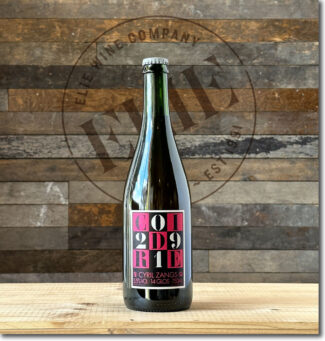 Cyril Zangs ’14 Glos’, 2019 IGP Cidre de Normandie ($27) – (Effervescent Brut – Cidre Bio 5.5% abv)
Cyril Zangs ’14 Glos’, 2019 IGP Cidre de Normandie ($27) – (Effervescent Brut – Cidre Bio 5.5% abv)
From the tiny commune of Glos in Calvados, Cyril Zangs produces this IGP cidre—IGP, for reference, is an EU quality classification that became valid in 2009; it means Indication Géographique Protégée and supplanted Vin de Pays. ‘14 Glos’ shows a creamy and rich texture, and displays notes of star anise, orange peel and unsurprisingly, bittersweet apple.
Guillaume & Thierry Desfrièches
Cidrerie Léon Desfrièches et Fils
‘Le Père Jules’
“In 1923, my father distilled his first Calvados”, says Léon Desfrièches, current head of the Desfrièches clan, and who has (since 1949) carried on the cidre and distilling traditions put in place by ‘Père Jules.’ In 1976, Léon’s eldest son Thierry joined him, followed by Guillaume, Thierry’s son, in 2002. Jules, Léon, Thierry and Guillaume—four generations of Desfrièches.
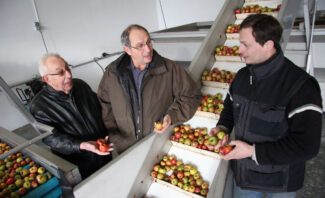
Léon, Thierry & Guillaume Desfrièches, Cidrerie Léon Desfrièches et Fils
Located in the Norman village of Saint Desir, the flagship cidre is made in honor of the late patriarch Jules. Now 85, Léon says: “I would have really liked my father sees what we have accomplished. As for myself, I hope I am like my Calvados: Serene and not afraid of aging with elegance, grace and roundness.”
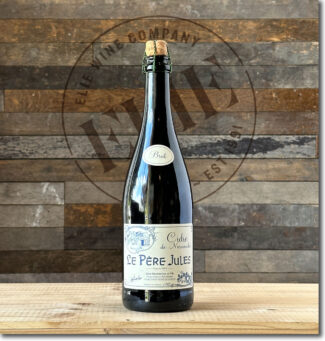 Cidrerie Léon Desfrièches et Fils ‘Le Père Jules’, IGP Cidre de Normandie ($16) – (Effervescent Brut – 5% abv)
Cidrerie Léon Desfrièches et Fils ‘Le Père Jules’, IGP Cidre de Normandie ($16) – (Effervescent Brut – 5% abv)
Very mature apple notes do homage to the Father Jules, showing white flowers and honey. Upfront in the first mouth, it develops an earthy, rich and fruity bouquet with interesting tannins for a long aftertaste.
Brittany
Like Normandy, the apple is emblematic of nearby Brittany; there are over 600 varieties grown and Breton farm cidre is the ultimate local drink. Orchards abound throughout the region, but sites around Dol-de-Bretagne, the Rennes and Vitré valleys, through the length of the Rance valley and the Vannes region are some of the most heralded. Of somewhat lesser importance to the economy, but still vital to the culture are Pommeau de Bretagne AOP and Eau de Vie de Cidre—a vague Breton answer to Calvados.
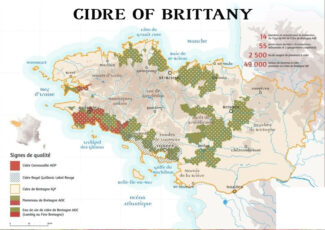
Like wine, Breton cidre celebrates outstanding vintages, and there are a number of officially sanctioned terroirs: Among them, Cidre de Cornouaille was the first product from Brittany to be granted an Appellation d’Origine Protégée. It comes from an area that covers 38 communities around Quimper that meet certain criteria such as hours of sunshine, rainfall or altitude. Cornouaille is a semi-dry cider made from 100% pure juice and has a golden color, very fine bubbles and a slight hint of bitterness.
Hervé Seznec
Cidrerie Manoir du Kinkiz
Hervé Seznec found his calling at an early age and has dedicated himself to produce world-class cidre. At the age of 19 he replanted his 74 acres of family orchards with 25 varieties of cidre-friendly apples. The core of his passion was the creation of natural cidre; as such, he uses no herbicides and allows indigenous plants and grass to grow between the trees.
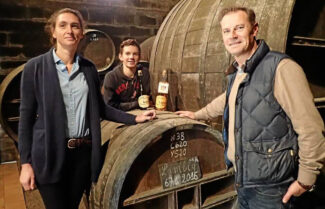
Maugane & Hervé Seznec with their son Louis-Maël, Cidrerie Manoir du Kinkiz
“From the ladybugs that rid our orchards of insects,” he says, “to the almost mystical darkness of the cellars where our AOP Cornouaille cidre is aged in huge oak casks, we are making a genuine attempt to return to the hands-on, artisan production methods of our ancestors.”
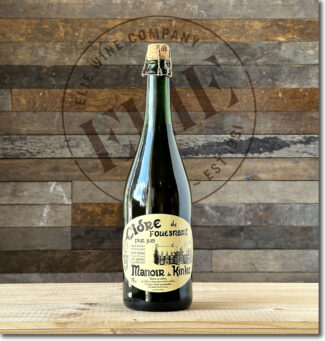 Cidrerie Manoir du Kinkiz ‘Cidre de Fouesnant’, AOP Cornouaille ($15) – (Effervescent Brut – 5% abv)
Cidrerie Manoir du Kinkiz ‘Cidre de Fouesnant’, AOP Cornouaille ($15) – (Effervescent Brut – 5% abv)
Fouesnant is a commune on the south coast of Brittany renowned for its orchards, regarded as the source of some of the very best Breton cidres. Hervé Seznec maintains, “Our Fouesnant cidre is assembled from old apple varieties, all harvested by hand. The apples are then sorted manually, and pressing is done only when the fruit is at its peak ripeness, from late September to December. The fermentation is slow and ends with a second, 2½ month bottle fermentation, giving the cidre its very fine bubbles. This cidre has a lot of personality and is well-defined by its roundness, persistent flavors of freshly cut apple, complemented by notes of butter and hazelnut.”
François Séhédic
Cidre Séhédic
A recipient of the Prix d’Excellence by the French Ministry of Agriculture for the quality of its product, Séhédic cidres are all certified organic. Located in western Brittany, only the traditional apples of the region are used in production. Although they may sound like a cornucopia of the weird and unpronounceable—Dous Moën, Dous Coët, Marie Menard, Kermerlen, Stang Ru, Trojen Hir and Mad Koz—they all contribute to a complex and age-worthy beverage.
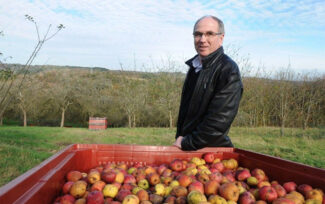
François Séhédic, Cidre Séhédic
Cidre Séhédic has three apple orchards across 45 acres; some of the trees are more than 40 years old. All cidre is made without the addition of sugar, water or SO2. The Séhédic family has been producing cidre since 1950, with the second generation Marie Laure Séhédic and her husband Christian Danielou now running the operation.
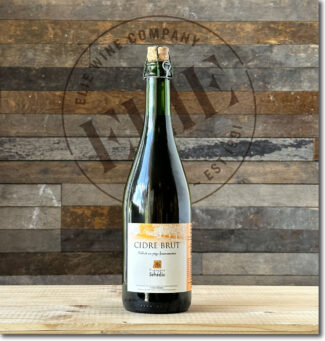 Cidre Séhédic ‘Fouesnant’, IGP Cidre de Bretagne ($15) – (Effervescent Brut – Cidre Bio 5.5% abv)
Cidre Séhédic ‘Fouesnant’, IGP Cidre de Bretagne ($15) – (Effervescent Brut – Cidre Bio 5.5% abv)
Produced from 30 heirloom varieties: Rich aromas of ginger and cinnamon spiced apple-sauce followed by a finely-textured palate; more savory stewed apple with an appealing acid-driven tartness on the finish, and lasting notes of baking spices and stony minerality.
Cédric Le Bloas
Cidrerie du Léguer
Du Léguer is located six hours directly west of Paris; so far that to go any further west, you’d get your feet wet. In this apple-friendly maritime region, Cédric Le Bloas farms 15 acres, raising artisan varieties like Marie Ménard, Jeanne Renard, Peau de Chien and the sharpest apples, Judor, Locart Vert, Rouget de Dol and Petit Jaune.
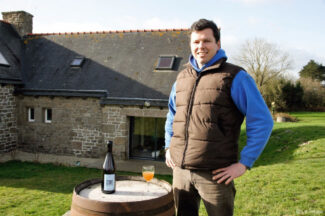
Cédric Le Bloas, Cidrerie du Léguer
©Le Trégor
According to Cédric, “Each cuvée is made according to my taste, however the same process is followed time and again. The trees are hand harvested three times between October and December, before further ripening, in crates before pressing up to four weeks later. The cidres go through two ferments: the first lasting five months before bottling, followed by a three month fermentation in bottle. The cidres are bottled with no sulfur, just pure juice, naturally sparkling and spontaneous, no collage, only racking and filtering when required.”
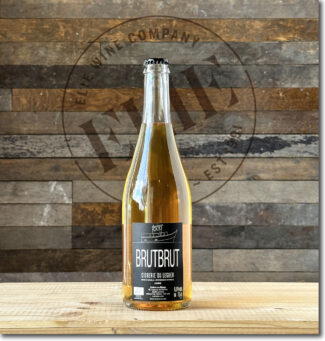 Cidrerie du Léguer ‘BrutBrut’, IGP Cidre de Bretagne ($17) – (Effervescent Brut – Cidre Bio 6.8% abv)
Cidrerie du Léguer ‘BrutBrut’, IGP Cidre de Bretagne ($17) – (Effervescent Brut – Cidre Bio 6.8% abv)
Sourced from two different orchards, the cidre is made with an apple blend that is 5% bitter, 50% bitter-sweet, 25% sweet, 20% sharp. As with all of Cédric’s cidres, it is made from apples that have fallen and were allowed to further ripen in wooden crates. Cédric uses the old-school process of “keeving” to clean the musts (thus they are not filtered) and all fermentations are natural. The cidre is woody and vinous, showing aromas of dry apples, mild barnyard notes and earth along with a touch of vanilla.
Notebook ….
The Styles of Cidre
At Elie’s, we confess to being in the neophyte stage of French cidre appreciation, and so in interest of broadening our horizons, we scratched the surface of a subject so vast we’d need a separate newsletter to do it justice.
Still, there is a primer course that can offer a little insight into one aspect of it: Style.
The dream state of most French cidre is rich, lush, amber and full of bittersweet apple character; most are low in acidity but well-balanced between the full-bodied fruitiness and tannin. They range from dry to sweet. ‘Fermier’ is farmhouse cidre made where the apples are grown (similar to ‘mis en bouteille au château’ in Bordeaux) and ‘bouché’ refers to the cork stopper, often caged when the cidre is effervescent.
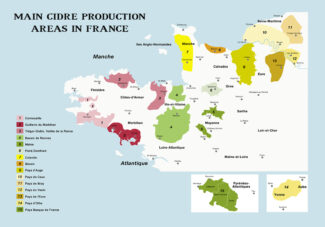
Cidre can be made still or sparkling, desert-style or fortified, or even co-fermented with hops or other fruit juices. So far, the cidres that have impressed us the most have been made from pure, farm-pressed apple juice and electrified with a natural mousse created in the bottle.
It’s a delightful journey of discovery to the style that best suits your palate, but to take the challenge most authentically, cidre should be sipped from wine glass. Traditionally, country folk could not afford glass, so they used ceramic or crockery. The favored receptacles looked like small bowls known as ‘bolées.’
Cidre & Food Experience …
Normandy Invasion: Cidre Storms Ashore at Coney Island
Join us for a Cidre Tasting at Nicky D’s Coney Island in Royal Oak! On Sunday, July 16, between 5 pm and 7 pm, we will sample premium cidres from Maison Hérout, Cyril Zangs (Normandy) Manoir du Kinkiz, Cidrerie du Léguer (Brittany).
Afterward, stay for dinner with a bottle of Cidre or two to pair with all-American Nicky D’s.
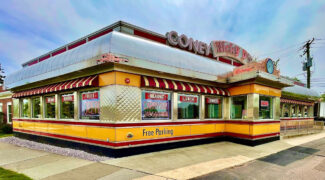
During the tasting, Nicky D’s will be closed to the public. The featured Cidres will be offered for sale to take home or uncork to enjoy with dinner at Nick D’s during the tasting hours. Regular Nicky D’s Coney Island menu will be available to order choice of meal and pay the diner directly for a Cidre & Coney food experience. RSVP is required (Only at 248 398 0030).
Nicky D’s Coney Island in Royal Oak at 32657 North Woodward Avenue.
- - -
Posted on 2023.06.30 in Cidre, France, Wine-Aid Packages
Featured Wines
- Notebook: A’Boudt Town
- Saturday Sips Wines
- Saturday Sips Review Club
- The Champagne Society
- Wine-Aid Packages
Wine Regions
Grape Varieties
Albarino, Albarín Blanco, Albarín Tinto, Alicante Bouschet, Aligote, Altesse, Arbanne, Auxerrois, Barbarossa, barbera, Biancu Gentile, Bonarda, bourboulenc, Cabernet Franc, Calvi, Carcajolu-Neru, Chardonnay, Chasselas, Chenin Blanc, Cinsault, Clairette, Cortese, Corvina, Corvinone, Counoise, Dolcetto, Erbamat, Ferrol, Friulano, Fromenteau, Gamay, Garganega, Garnacha, Garnacha Tintorera, Gewurztraminer, Graciano, Grenache Blanc, Groppello, Jacquère, Juan Garcia, Lambrusco, Lladoner Pelut, Loureira, Macabeo, Macabou, Maconnais, Malbec, Marcelan, Marsanne, Marselan, Marzemino, Mencía, Merlot, Montanaccia, Montepulciano, Montònega, Morescola, Morescono, Moscatell, Mourv, Mourvèdre, Muscadelle, Muscat, Natural, Nebbiolo, Niellucciu, Parellada, Patrimonio, Pecorino, Pedro Ximénez, Persan, Petit Meslier, Pineau d'Aunis, Pinot Blanc, Pinot Gris, Pinot Meunier, Pinot Noir, Pouilly Fuisse, Pouilly Loche, Prieto Picudo, Riesling, Rousanne, Sagrantino, Sangiovese, Sauvignon Blanc, Savignin, Sciacarellu, Semillon, Sparkling, Sumoll, Tempranillo, Teroldego, Timorasso, Trebbiano, Trebbiano Valtenesi, Ugni Blanc, Verdicchio, Vermentino, Viura, Xarel-loWines & Events by Date
- May 2024
- April 2024
- March 2024
- February 2024
- January 2024
- December 2023
- November 2023
- October 2023
- September 2023
- August 2023
- July 2023
- June 2023
- May 2023
- April 2023
- March 2023
- February 2023
- January 2023
- December 2022
- November 2022
- October 2022
- September 2022
- August 2022
- July 2022
- June 2022
- May 2022
- April 2022
- March 2022
- February 2022
- January 2022
- December 2021
- November 2021
- October 2021
- September 2021
- August 2021
- July 2021
- June 2021
- May 2021
- April 2021
- March 2021
- February 2021
- January 2021
- December 2020
- November 2020
- October 2020
- September 2020
- August 2020
- July 2020
- June 2020
- May 2020
- April 2020
- March 2020
- February 2020
- January 2020
- December 2019
- November 2019
- October 2019
- September 2019
- August 2019
- July 2019
- June 2019
- May 2019
- April 2019
- March 2019
- February 2019
- January 2019
- December 2018
- November 2018
- October 2018
- September 2018
- August 2018
- July 2018
- June 2018
- May 2018
- April 2018
- March 2018
- February 2018
- January 2018
- December 2017
- November 2017
- October 2017
- September 2017
- August 2017
- July 2017
- June 2017
- May 2017
- April 2017
- March 2017
- February 2017
- January 2017
- December 2016
- November 2016
- October 2016
- September 2016
- August 2016
- July 2016
- June 2016
- May 2016
- April 2016
- March 2016
- February 2016
- January 2016
- December 2015
- November 2015
- October 2015
- September 2015
- August 2015
- July 2015
- June 2015
- May 2015
- April 2015
- March 2015
- February 2015
- January 2015
- December 2014
- November 2014
- October 2014
- September 2014
- August 2014
- July 2014
- June 2014
- April 2014
- March 2014
- February 2014
- January 2014
- December 2013
- November 2013
- October 2013
- September 2013
- August 2013
- July 2013
- June 2013
- May 2013
- April 2013
- March 2013
- February 2013
- January 2013
- December 2012
- November 2012
- October 2012
- February 2004
Search



